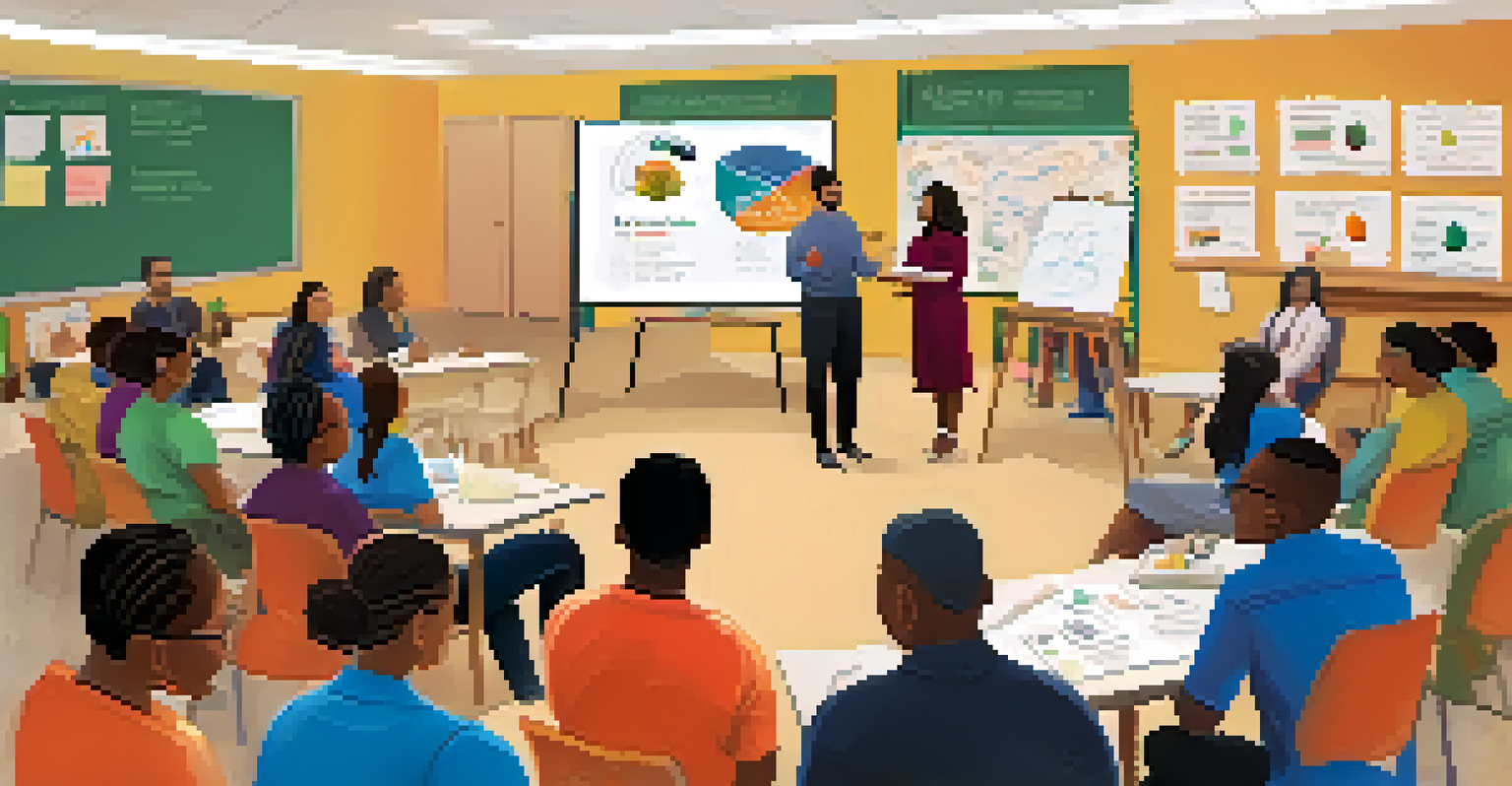Creating Culturally Relevant Curriculum: Policy Considerations

Understanding Culturally Relevant Curriculum
Culturally relevant curriculum is designed to reflect the diverse backgrounds of students. It incorporates elements from various cultures, ensuring that every student sees themselves represented in the material. This approach not only fosters inclusivity but also enhances engagement and understanding among learners.
Education is the most powerful weapon which you can use to change the world.
By integrating cultural perspectives, educators can create a dynamic learning environment that validates students' identities. For instance, using literature from various cultures can spark interest and relate to students' personal experiences. This relevance serves as a powerful motivator, encouraging deeper exploration of the subject matter.
Ultimately, a culturally relevant curriculum can bridge the gap between students' home lives and school experiences. It allows students to connect their personal histories with the academic content, fostering a sense of belonging. This connection is crucial in helping all students thrive in their educational journeys.
The Role of Educational Policy in Curriculum Development
Educational policy plays a pivotal role in shaping curriculum standards and practices. Policymakers set the framework within which educators operate, often determining what content is prioritized. Therefore, inclusive policies are essential for fostering culturally relevant curricula.

For example, policies that encourage diversity in educational materials can lead to the selection of texts and resources that reflect a wide range of cultural perspectives. Moreover, by mandating inclusivity in teacher training, policies can ensure that educators are equipped to implement these changes effectively. Such measures can have a significant impact on how cultures are represented in the classroom.
Importance of Culturally Relevant Curriculum
A culturally relevant curriculum reflects students' diverse backgrounds, enhancing engagement and fostering a sense of belonging.
It's vital for policymakers to listen to the communities they serve when creating these guidelines. Engaging with parents, students, and cultural organizations can provide valuable insights into the needs of diverse populations. This collaborative approach can lead to more effective and relevant educational policies.
Assessing Community Needs for Relevant Curriculum
To develop a culturally relevant curriculum, understanding community needs is crucial. Engaging with local families and cultural organizations can provide insights into the histories and experiences that matter most to students. This grassroots approach not only informs curriculum development but also fosters a sense of ownership among the community.
Culturally relevant pedagogy is a way of teaching that recognizes the importance of including students' cultural references in all aspects of learning.
Surveys, focus groups, and community meetings are effective tools for gathering feedback. Such initiatives help educators identify the cultural references and historical contexts that resonate with their students. By actively involving the community, schools can ensure that the curriculum is reflective of the diverse backgrounds of their student body.
Moreover, ongoing assessment of community needs can help maintain the relevance of the curriculum over time. As cultures evolve and new generations emerge, what was once relevant may change. Regular check-ins with the community can help educators stay in tune with these dynamics.
Training Educators on Culturally Relevant Practices
Teacher training is a foundational element in implementing a culturally relevant curriculum. Educators must be equipped with the knowledge and skills to recognize and address the diverse needs of their students. Professional development programs focusing on cultural competence can empower teachers to create inclusive classrooms.
Workshops and training sessions can offer strategies for integrating diverse perspectives into lesson plans. For instance, educators might learn how to incorporate multicultural literature or design projects that celebrate students' cultural heritage. These practices not only enrich the curriculum but also validate students' backgrounds.
Role of Policy in Curriculum Design
Educational policies are crucial in shaping inclusive curricula by prioritizing diverse materials and ensuring effective teacher training.
Additionally, fostering a community of practice among educators can enhance collaborative learning. When teachers share experiences and resources, they can collectively refine their approaches to culturally relevant teaching. This shared commitment can lead to a more cohesive and effective educational experience for all students.
Evaluating the Impact of Culturally Relevant Curriculum
Once a culturally relevant curriculum is in place, evaluating its impact is essential. Schools can use a variety of assessment methods, including student feedback, academic performance, and engagement metrics. Regular evaluations help determine whether the curriculum meets the diverse needs of students.
For example, tracking changes in student participation and interest can provide valuable insights into the effectiveness of the curriculum. If students are more engaged and performing better academically, it's a strong indicator that the curriculum is resonating with them. On the other hand, if challenges arise, schools can quickly adjust their strategies.
Moreover, involving students in the evaluation process can yield rich feedback. Student voices are crucial in understanding how well the curriculum reflects their identities and experiences. This participatory approach not only improves the curriculum but also empowers students to take an active role in their education.
Addressing Challenges in Implementation
Implementing a culturally relevant curriculum is not without its challenges. Resistance from stakeholders, whether due to traditional views or lack of understanding, can hinder progress. It's essential for educators and administrators to communicate the benefits of this approach clearly to alleviate concerns.
Additionally, resource constraints may limit the ability to develop and implement a culturally relevant curriculum. Schools may struggle with a lack of diverse materials or training opportunities. Finding creative solutions, such as partnering with local organizations or utilizing online resources, can help overcome these hurdles.
Community Engagement is Essential
Assessing community needs through feedback helps create a curriculum that resonates with students' cultural experiences and backgrounds.
Continuous advocacy for funding and support from policymakers is also vital. Engaging with community leaders and stakeholders can help raise awareness of the importance of culturally relevant education. By working together, communities can create an educational landscape that truly reflects and honors their diverse cultures.
The Future of Culturally Relevant Curriculum
Looking ahead, the future of culturally relevant curriculum appears promising yet challenging. As demographics continue to shift, education systems must adapt to meet the needs of increasingly diverse student populations. This evolution will require ongoing commitment from educators, policymakers, and communities alike.
Technological advancements can also play a role in enhancing culturally relevant curricula. Digital resources and platforms can make it easier to access diverse materials and perspectives. By leveraging technology, educators can create more personalized and engaging learning experiences that resonate with students.

Ultimately, the goal is to create an education system that values and reflects the rich tapestry of human experience. By fostering inclusivity and relevance in the curriculum, we can prepare students not only to succeed academically but also to thrive as culturally competent individuals in a global society.